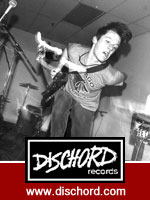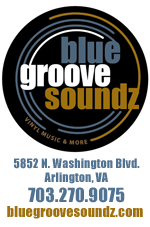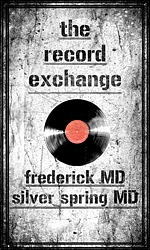
Touring to promote their 2014 release, Man on the Run, Bush took the stage at the Fillmore in Silver Spring, MD to a sold out crowd of eager fans for Tuesday evening’s performance.
I am a little jaded about some things. The birth of the alternative music movement is something I look at with both affection and dismay. Having been a teenager in the ‘90s, my fellow music-fanatic friends and I had to watch as the punk rock and hardcore scenes that we cared about so much laid dying before our eyes. The bands we loved and held so very dear were now exposed to massive audiences in ways we had never dreamed of at the time. Our music was becoming popular culture. It could be consumed, dissected, and imitated by the masses. It was open to be exploited. New alternative acts were sprouting up almost every week playing faster, harder, and fuzzier. The lines between popular and alternative music had been forever blurred.

By 1992, alternative music was by no means a new entity. The Seattle movement was in full swing and the album that changed everything, Nirvana’s Nevermind, had been released in the previous year. Nirvana’s most commercially successful single, “Smells like Teen Spirit” hit the airwaves in late 1991 and boasted its significance as the shot heard around the world as for the impact it had the global music climate. A new genre had been handed to the world. Alternative music was born and music culture everywhere changed overnight. Alternative bands, especially grunge acts, had taken control of national airwaves and big record labels raced and competed to sign and break the next big alternative band. All over the country, national radio stations suddenly had artist rosters that previously only existed on college radio stations. As a result, a generation of fans had been exposed to a culture that previously only existed as a “sub-culture.”
At that point in time, the Internet was its infancy and being a fan of non-popular music was a little different then it is now. People used to have to work a lot harder to get their music fix quenched. Sometimes this meant driving to the record stores frequently, making sure you always got a pile of new fliers at shows, reading print mags like Maximum Rock and Roll obsessively, and ALWAYS buying records from bands at their merch tables (this you should still do), because that was often the only place to get a band’s record.
The alternative scene had in fact been building for years by that point. Big acts from the west coast like Jane’s Addiction and Red Hot Chili Peppers already had a huge followings. Perry Farrell’s Lollapalozza Festival was already touring in the summer of 1991 and momentum in the alternative scene had seen no signs of changing pace. The release of “Teen Spirit” was just the cake topper that blew up the cake… and got it all over the walls.
These days the term “alternative” is the same as saying “mainstream.” Music cultures have integrated into something so much bigger then the sum of any single part in almost every genre. Many wires have been crossed in terms of style, sound, and influences. Most of all, audiences have been broadened tremendously. Maybe times have caught up with putting labels on music. Perhaps we need a new set of terms or maybe it’s time to lose the terms all together. Maybe we should just describe music with the way it makes us feel. Adhering to this method, Tuesday night’s performance could be summed up in one word, “happy.”


The ‘90s produced countless bands who could be billed as alternative rockers, few of which have had more commercial success than English rockers Bush. They have been nominated for at least one Grammy and they won an American Music award in 1998 for favorite Alternative Group. For their appearance at the Fillmore, Bush was in full swing and ready to entertain.
Known for their heavy, melodic, yet punchy rhythms, Bush indeed has a sound that is all their own. Combining solid, lucid, and well-written songs with beautifully injected fuzzy guitar work from guitarist Chris Traynor, the band has a thought out, well-rounded, and extremely tight live sound. Led by front man Gavin Rossdale on vocals and rhythm guitar, Bush went into Tuesday evening’s set fast like a bullet and the audience couldn’t get enough. With Rossdale’s signature and certainly recognizable vocals, the band has a definite and distinguishable sound which sets them apart from their contemporaries. Rossdale’s vocals ride that line perfectly between gritty and smooth and are the defining component of this band.

Known also for his model good looks and his long time marriage to Gwen Stefani, Rossdale has lost nothing over the years in regards to his performance. In fact, when I first thought about covering this show, my only reservations were that the venue may be packed with gushing fans trying to get a glimpse at their ‘90s crush, and a band playing songs that had frankly passed their peak.
As it turns out, I was half only half wrong. While their were plenty of screaming fans (cell phones in hand) enthusiastically going crazy over the subtle eye movements of Mr. Rossdale, I’ll have to admit I was completely taken off guard with the caliber of Bush’s live show. To put it simply, Bush is an amazing live band and I can’t believe just how good they sounded on that stage. Nothing was ever lost through any hiatus that this band has taken and I have never heard them sound better.
The setlist included “The Sound of Winter,” “Everything Zen,” “Machinehead,” “Glycerine,” “The Chemical Between Us,” “Swallowed,” and “Comedown.”




























THEORY OF A DEADMAN
































